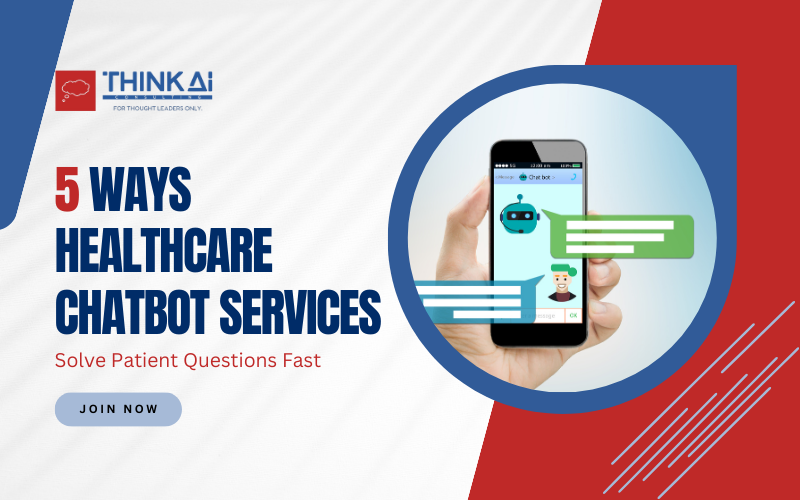In today’s healthcare environment, patients are seeking quick and effective ways to get answers to their questions. With advancements in technology, chatbots in healthcare have become essential tools that offer immediate support and information. These helpful assistants improve communication and enhance the overall patient experience.
This blog will share with you five ways healthcare chatbots clear patient questions quickly and easily.
Instant Accessibility
Some of the exclusive features that health care chatbots possess are that they are always available. Unlike a traditional health care professional, who works at only specific hours, health care chatbot services can be accessed during any time of the day. The advantages of being available 24/7 provide accessible solutions primarily to patients who want answers when health care offices are closed.
Patients can get information directly to their doorstep, whether someone wakes up at the crack of dawn or lies in bed till late at night. It empowers the patients and relieves the frustration usually associated with waiting for office hours to open.
Quick Answers to Frequently Asked Questions
Healthcare chatbot services are designed to address the most common questions that a patient asks. Whether it has to do with scheduling an appointment or questions on symptom-related matters, medication dosages among others, these tools bring about accurate, timely responses. With the use of predefined answers and smart algorithms, chatbots are able to quickly comprehend and respond.
Quick responses save the time of patients and healthcare personnel so that they may handle more complicated cases that require personal efforts. For instance, in case a patient wishes to know more about a particular medical treatment, a chatbot can give a clear and simple answer, thus lessening the effort of searching through many sources or waiting for a callback from a healthcare provider. This is very efficient in streamlining the workflow in health care settings, thus raising patient satisfaction.
Streamlining Appointments
Many patients find it difficult and lengthy when making an appointment. Chatbot healthcare services ease this experience because patients can book, reschedule, or cancel their appointments directly through a chat interface. The platform is easy for the patient; it presents available time slots so that they can choose a convenient option that suits them. This also avoids going through complex phone systems and lengthy waiting times.
Healthcare providers can allocate their time and resources more effectively with the reduction in the number of phone calls and manual entries necessary for making an appointment. The prospect of missing an appointment is also lower because chatbots in healthcare remind patients of their scheduled appointments. Healthcare chatbot services ensure better continuity of care and increased patient engagement by streamlining the scheduling process.
Reduced Anxiety Through the Speed of Response
Many patients become anxious while waiting for information on health problems. Healthcare chatbots help in the immediate availability of information that eases anxiety and stress in a patient. The availability of information after a patient expresses worry about their symptoms or decision on a treatment option reduces great uncertainty. Chatbots can help an anxious patient at each stage of the pre-assessment process, making them come to terms and take comfort in their situation.
This immediate availability of information is especially important when needed to calm feelings of overwhelming anxiety and fear concerning health. Interacting with the chatbot, which could readily offer instant answers, could positively influence the patient’s psychology, giving them a sense of control during this whole health journey.
Data Collection for Patients
Another significant role that healthcare chatbot services play is in gathering patient information. Patients will usually share necessary information about their symptoms, past medical history, and preferences in the course of the interaction. Such information is vital for healthcare professionals as it would provide an easy clue for recognizing trends and a better understanding of the needs of the patients.
Sifting through the gathered data will improve service delivery and customize the applications to certain patient populations. For instance, when the chatbot receives questions from patients regarding a specific health condition, health providers may use that information in improving educational documents or even in readjusting their service provision.
Chatbots also help bring the most urgent cases forward for immediate attention, and critical health issues get dealt with the efficiency they deserve. This way chatbots can improve health outcomes and make the healthcare system more responsive.
Conclusion
In conclusion, healthcare chatbots reshape how patients interact with their providers. These digital tools provide instant availability and quick answers to most frequently asked questions and simplify the scheduling process; for these reasons, they make healthcare more accessible than ever. They also bring direct support that helps reduce the anxiety level of patients but collect precious data for healthcare providers in the meantime.
Advancements in technology will only contribute to the further development of chatbots in healthcare. It will also help further the expansion toward enhancing patient experiences while making way for better efficiency. Its adoption is nothing less than vital for healthcare providers wanting to thrive in today’s dynamic environment.
The responsiveness and accessibility of digital solutions have been knocking at the door of future patient care. They enable healthcare providers to enhance patient satisfaction while streamlining operations for a more effective healthcare system by incorporating these tools into their practice. This innovation holds great potential for better patient engagement and outcomes.

